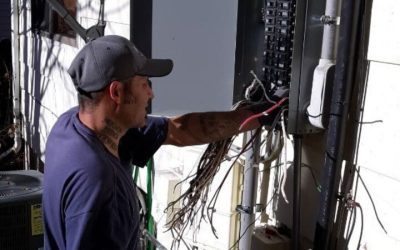In many electronic applications, there is a need for very high voltages. For example, a fluorescent light fixture and microwave oven may appear to run on 120-volt single phase power but this is not the case. These things need very high voltages to operate and it requires special devices to raise the voltages. This is where the high voltage transformer enters the picture.
Why Are Higher Voltages Required?
Did you know that power going to your home is delivered as high as 7200 or even 13,800 volts? This is necessary because your electricity must come from a long way off and higher AC voltages hold up better for long distance power transmission. Yet, if you follow the electrical lines from your meter you’ll see a funny looking thing up on the pole called a transformer. It receives 7200 volts or more and lowers it to 120 volts, so your home appliances can operate safely. This is known as a step down or buck high voltage transformer.
Some appliances require very high voltages to burn gases or transmit high frequency radio waves (microwave ovens). This requires transformers to take 120-volt power and turn it into thousands of volts. Cathode ray tube TV sets required high voltages and if you examine them closely, you’ll see metal enclosures known as “dog houses” which contain a transformer and a capacitor capable of storing very high voltages. This is why they carried special warning labels.
What Happens in a Transformer?
Imagine two specially designed coils of wire in close proximity. One has 1000 windings and the other contains 5000 windings. Now imagine a 100-volt source entering the smaller coil and exiting the larger one (although they are not directly connected). Power leaving the large coil has about 500 volts of electricity. This is the basic principle behind the purpose and function of the high voltage transformer.



